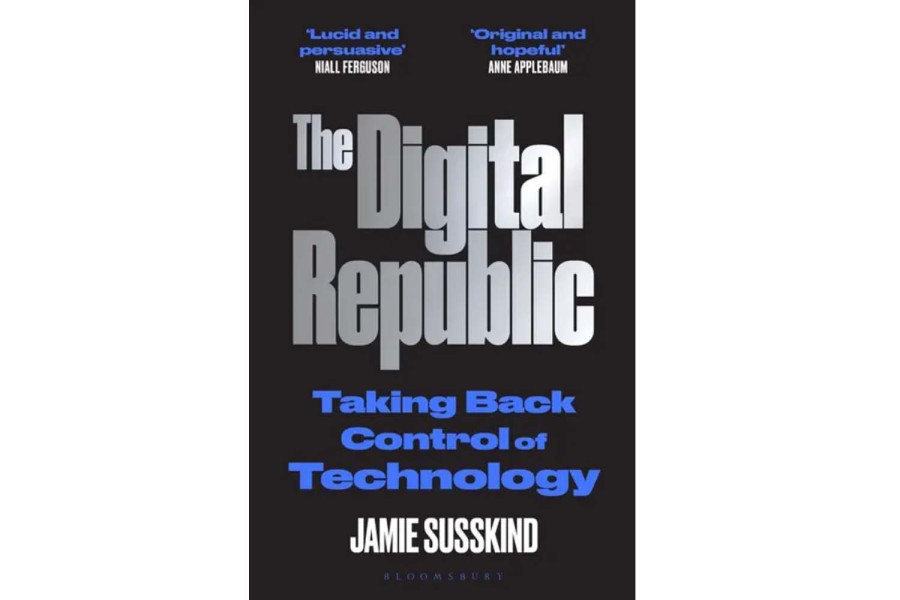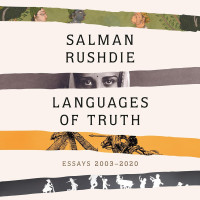Books
The push for digital accountability
In ‘The Digital Republic’, Susskind argues for stronger accountability of tech giants and proposes a new democratic framework for the digital age.
Narayan Prasad Ghimire
The definition of power changes as per evolving undercurrents. The traditional properties and parameters linked to power are quickly losing their relevance, especially due to digital disruption. AI further reinforces it. AI and its investors have emerged as no less stormy petrels than eccentric politicos, penetrating every sphere of life and upending human norms and values. The information, once widely regarded as the ‘power’, is drowned out by the deluge of dis- and misinformation. It has left information consumers jittery, bewildered and unable to navigate digital platforms and nurture digital hygiene.
Almost all countries are scrambling over the information disorder, arguing its severe assault on the system and discussing how they could regulate the tech platforms and sanitise the information ecosystem.
Who is responsible for this? Those who aggregate vast amounts of information and create programmes using users’ data, lining their pockets. The handful of tech companies have emerged so forceful and unaccountable that they are further blamed for eroding democracy and undermining humanity. Irrespective of the IT and digital innovations, inventions, convenience and luxuries served to the people at an unimaginable scale, the tech binge has gone beyond the limitations, and the time has come to bring them to limit. It is the glaring exhortation of the book, ‘The Digital Republic: Taking Back Control of Technology’, authored by Jamie Susskind. He urges all concerned to redefine the republic where every tech user will be empowered to question the unaccountable power wielded by the tech giants.
Celebrating the republic as the most democratic system, where citizens are duly recognised and in a position to enquire every entity that exercises unusual power, Susskind asserts it is the market individualism piling up power on tech companies, which the Silicon Valley has further triggered.
Oodle of information has clogged the human mind. “Our working memory can only hold around seven items at a time, and ‘information overload’ is an obstacle to clear thinking,” he writes. It suggests that the creation of digital information and its spread at scale with tweaks from AI and algorithms are sure to violate the human right to think.
Tech companies always use algorithms that take user data to make accurate predictions—it’s a key part of their business. Though companies claim their algorithms prioritise user-friendliness and rights, transparency is lacking. A case in point: “A deeper issue is that machine learning algorithms often work in ways that even their human creators struggle to understand, still less explain. They do not apply neat rules. Instead, they look for pattern and relationships that can form the basis of prediction and decisions.”
The opaque nature of programmes leads to injustices for users. The author’s argument supports a well-known saying in the tech world: ‘garbage in, garbage out.’ He also emphasises the need for transparency and clarity regarding how tech platforms establish and enforce community standards.
The book reflects widespread concern about the constant scrutiny of humanity and emphasises the urgent need for public auditing of tech companies. As nonhuman agents like chatbots challenge human liberation, regulation of tech is a pressing need, Susskind underscores.
The internet that supports these technologies and businesses was once praised as the foundational infrastructure of democracy and informed society. However, this is no longer true, as the winner-take-all model prevails. He blames that tech companies are not persuading people/users but manipulating them where reason dies.
The writer not only exposes various digital anomalies and ills, including privacy breaches, surveillance, threats to free speech, discrimination, unfair trials, and the spread of misinformation, but he also suggests how the digital republic could foster a healthy public sphere where people’s rights are respected and promoted.
To make tech spheres publicly responsible, he suggests, “The software engineers might need a diploma in algorithmic injustice. The social media executives might need to have a certification course in which participants study the latest legal and ethical issues arising out of platform moderation. Not too burdensome, but at scale, these steps could make a difference.” He further emphasises ‘justice by design’.
‘Digital tribunal’ is another proposal Susskind makes for the digital republic, which he asserts would help settle disputes between users and tech platforms, especially in the case of high-stake algorithms. The sentence, “Tech firms are Byzantine in design and Kafkaesque in operation” (Page 179), acts as an adage, exposing the surreptitious work style of tech behemoths.
The writer appeals to tame the unaccountable power of tech giants to create a digital republic. He objects to tech industries’ sheer treatment of citizens as mere consumers, while the republic needs to recognise citizens’ rights. It will not only help dent the unaccountable power of tech giants but also empower citizens by lifting them out of the status of enslaved consumers.
To hold tech firms accountable, he suggests the Republican antitrust regime, which he believes prioritises citizens over consumers. In his observation, the terminologies of twentieth-century economics are no longer efficient in resolving the political problems of present big techs. The antitrust regulation model in the digital republic will prevent corporate hands from concentrating political, social and economic powers.
As the book title suggests, the digital republic must uphold people’s moral and civic values, where they are no longer under technology but live on their conscience and utilise tech spheres for human welfare.
Susskind extols digital governance initiatives of Europe and suggests others follow suit. Examples of tech platforms, including Facebook, X, Amazon and Google, are presented in the book to showcase their concentration of power.
The book, divided into 10 chapters, has 39 subchapters dwelling on issues like autocrats of information, technology and domination, the consent trap, responsible adults, republican rights, zone of darkness, algorithms, and system of free expression.
While the book advocates for controlling tech firms, it primarily suggests a digital republic as the approach to regulation. This framework emphasises that neither a single state institution nor corporate entities dictate the rules; instead, it highlights the role of independent public agencies that involve multiple stakeholders.
The Digital Republic
Author: Jamie Susskind
Publisher: Pegasus Books
Year: 2022
Price: Rs958




 8.12°C Kathmandu
8.12°C Kathmandu










